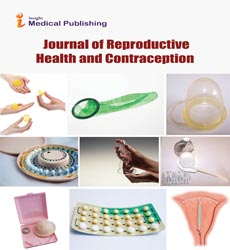The Ovarian Cancer and Menopausal Therapy: Putting Risk into Context
Agha Cook
Agha Cook*
Department of Gynaecology, Imperial College Healthcare, Georgia, US
- *Agha Cook:
- Agha Cook
Department of Gynaecology
Imperial College Healthcare, Georgia, US
E-mail: cookagha45@gmail.com
Received Date: November 01, 2021; Accepted Date: November 15, 2021; Published Date: November 22, 2021
Citation: Cook A (2021) The Ovarian Cancer and Menopausal Therapy: Putting Risk into Context. J Contracept Stud Vol 6 No.11:19.
After the results of the Women's Health Initiative (WHI) showed that women treated with conjugated equine oestrogen’s plus medroxyprogesterone acetate had an increased risk of breast cancer, coronary heart disease, stroke, and pulmonary embolism, the widespread use of MHT began to decline rapidly a decade ago. The randomised WHI intervention trial and the prolonged post topping stages of the investigation found no evidence of an increased risk of ovarian cancer.
A recent well-conducted meta-analysis from the Collaborative Group on Epidemiological Studies of Ovarian Cancer (CGESOC, which included 52 observational studies (17 prospective and 35 retrospective) with a total of 21,488 women, found that MHT was associated with an increased risk of serious and endometriosis epithelial ovarian cancer (EOC) in women who began treatment in their fifties. There was also a lower chance of clear-cell and mucinous ovarian cancer, according to the study. Women from North America, Europe, and Australia made up the majority of the participants. Women under the age of 55 who had a hysterectomy were not eligible.
The meta-analysis has several limitations, including: its observational nature, which includes both retrospective and prospective analysis; papers included publications from 1977 to 2013 with a wide range of clinical scenarios, diagnostic techniques, cancer assessment diagnosis, type of follow-up, and clinical indications for MHT; the amount of information provided varied; MHT doses, components, and route of administration were not detailed; and some variables which are relevant for EOC risk were not assessed. More than half of the cases were from the Million Women Study (MWS) and the Danish Sex Hormones Register Study (DaHoRS). The MWS was not designed to look at ovarian cancer as a primary outcome because it was based on self-reporting questionnaires.
In retrospective studies, the relative risk (RR) and 95% confidence intervals (CI) were higher in MHT former users for 5 years who stopped therapy 5 years ago (RR=1.26, CI 1.09–1.45), according to the meta-analysis. In addition, women who were solely given oestrogens (RR=1.21, CI 1.07–1.37) had a higher risk of EOC than women who were given both oestrogens and progestogens (RR=0.96, CI 0.83–1.10). When it comes to retrospective and prospective research, When the results of the studies were combined, the risk of ovarian cancer was higher for MHT ever users than never users (RR=1.14, CI 1.09–1.20), and for ever users versus never users in women who knew how long they had been using MHT (RR=1.17, CI 1.11–1.24). In addition, current or recent MHT users had a higher risk of ovarian cancer than never-users in all prospective trials (RR=1.37, CI 1.27–1.48). EOC risk appears to be similar for estrogenic-only (RR=1.32, CI 1.23–1.41) and estrogenic-plus-progestogen (RR=1.25, CI 1.16–1.34) therapies. Although there was still an excess of serous or endometriosis cancers about 10 years after quitting long-duration hormone therapy use (RR 1.25, 95% CI 1.07–1.46), the relative risk decreased with time following treatment discontinuation.
Open Access Journals
- Aquaculture & Veterinary Science
- Chemistry & Chemical Sciences
- Clinical Sciences
- Engineering
- General Science
- Genetics & Molecular Biology
- Health Care & Nursing
- Immunology & Microbiology
- Materials Science
- Mathematics & Physics
- Medical Sciences
- Neurology & Psychiatry
- Oncology & Cancer Science
- Pharmaceutical Sciences
